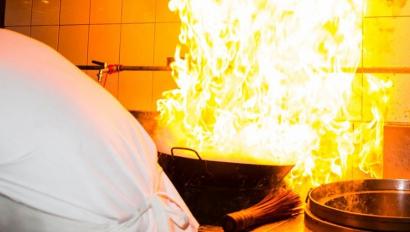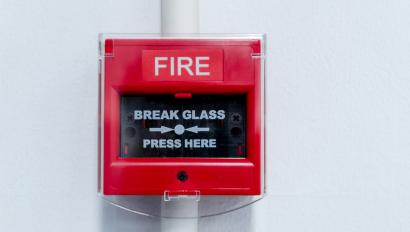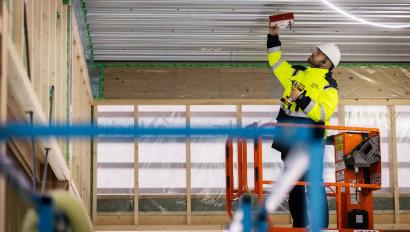Fire Extinguishers: A Guide to Types, Uses, and Safety
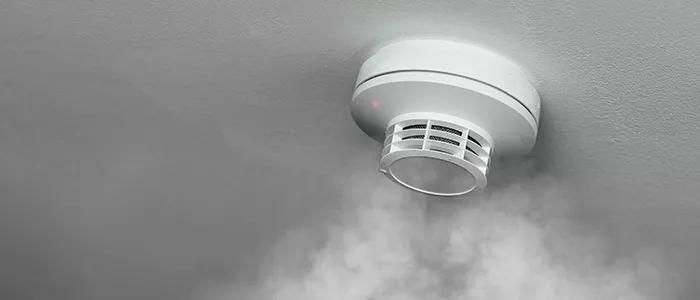
Are You Prepared to Put Out a Fire in the Workplace?
A fire extinguisher is a vital and advisable piece of safety equipment in the workplace - but you may be surprised to realise there are different types of fire, with different characteristics.
Before you go ahead and buy one, you need to know the difference between the categories/colour and to be able to choose which is right for you.
Over the years, different types of fire extinguisher have been developed to deal with the different fire types.
By understanding the different types of fire extinguisher types and their uses, you can ensure that you have the right extinguisher on hand to put out a fire safely.
Types of Fire Extinguishers: Color Codes and Fire Classes
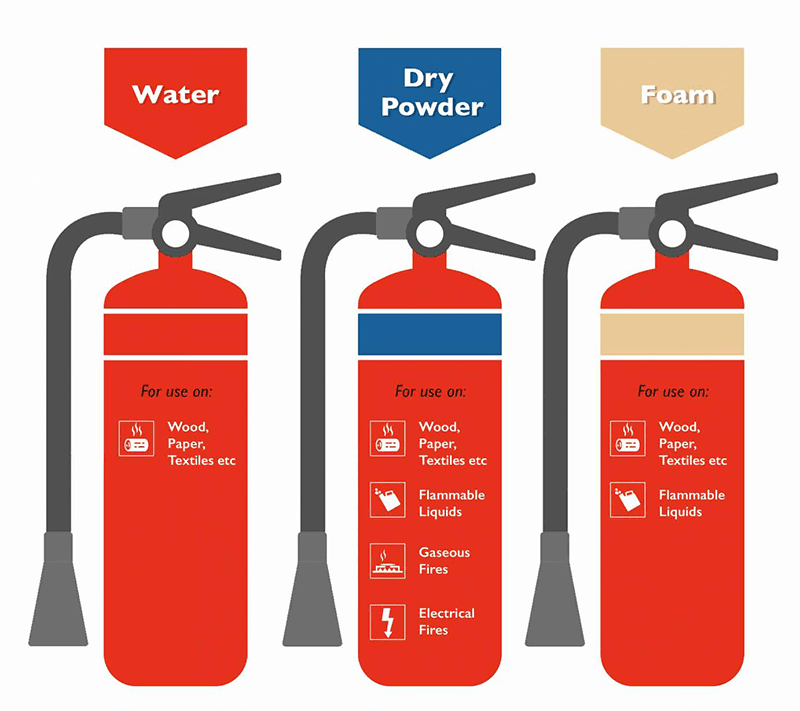
Red Label Fire Extinguisher: Water
- Class A - fires involving solid materials such as wood, paper or textiles.
Blue Label Fire Extinguisher: Dry Powder
- Class A - fires involving solid materials such as wood, paper or textiles.
- Class B - fires involving flammable liquids such as petrol, diesel or oils.
- Class C - fires involving gases.
- Electrical - fires involving live electrical apparatus (it doesn’t get an ‘official’ category)
Cream Label Fire Extinguisher: Foam
- Class A - fires involving solid materials such as wood, paper or textiles.
- Class B - fires involving flammable liquids such as petrol, diesel or oils.
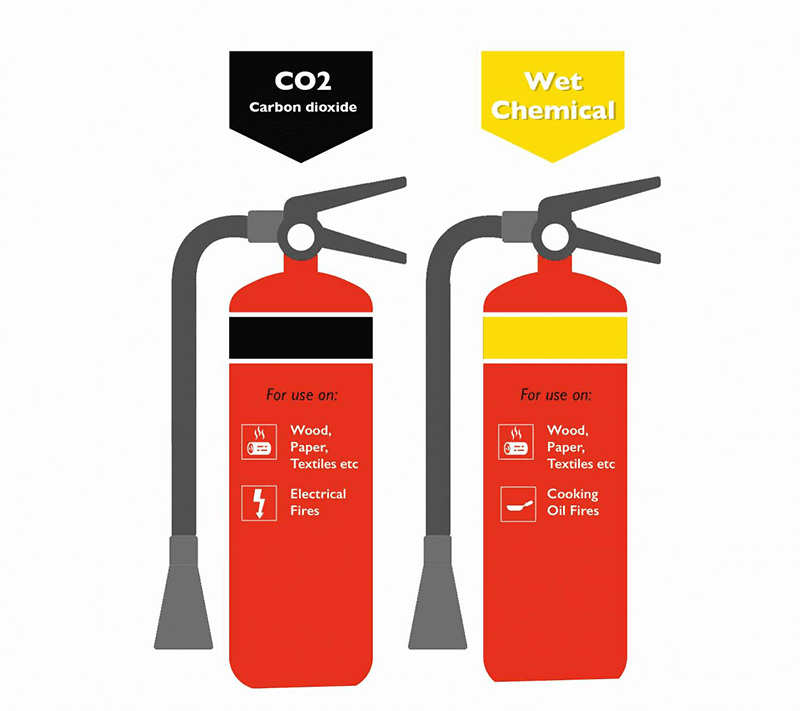
Black Label Fire Extinguisher: Carbon Dioxide (CO2)
- Class B - fires involving flammable liquids such as petrol, diesel or oils.
- Electrical - fires involving live electrical apparatus (it doesn’t get an ‘official’ category)
Yellow Label Fire Extinguisher: Wet Chemical
- Class A - fires involving solid materials such as wood, paper or textiles.
- Class F - fires involving cooking oils such as in deep-fat fryers.
Class A is the most common fire type but walking around your premises you should be able to identify areas where other fire types might arise.
Irish Fire Safety Regulations for Fire Extinguishers
At present, In Ireland, fire extinguishers are regulated by the Fire Services Act 1981 and the Safety, Health and Welfare at Work Act 2005. These regulations specify the types of fire extinguishers that are required in different types of buildings, as well as the frequency with which they must be inspected and maintained..
- Fire extinguishers must be located in easily accessible places
- Fire extinguishers must be clearly marked with their type and class
- Fire extinguishers must be inspected and maintained at least every year
- Fire extinguishers must be discharged and recharged every three years
Employers in Ireland are responsible for ensuring that their workplaces comply with the fire safety regulations for fire extinguishers. If a fire occurs in a workplace that does not have the required fire extinguishers, the employer may be held liable for any injuries or damage that results.
Are there Fire Extinguishers that cover all fire types?
There are no fire extinguishers that cover all fire types in Ireland. Fires are classified into five classes, and each class requires a different type of extinguisher.
The most common type of fire extinguisher that covers multiple fire types in Ireland is the ABC powder extinguisher. This type of extinguisher can be used on all fire classes except Class D. However, it is important to note that powder extinguishers can be messy and can create breathing difficulties, so they should only be used as a last resort.
If you are unsure what type of fire extinguisher to use, it is always best to err on the side of caution and use a type that is effective on all fire classes. You can also consult with a fire safety expert to get advice on the best type of extinguisher for your needs.
How to use a Fire Extinguisher?
Fire extinguishers are powerful tools that can be used to extinguish fires, but they should only be used by someone who has been trained in their use. If you have not been trained in the use of fire extinguishers, it is best to evacuate the building immediately if a fire breaks out.
However, if you find yourself in a situation where you need to use a fire extinguisher, here are the basic steps involved:
- Pull the pin to release the Safety Mechanism
- Aim the nozzle at the base of the fire
- Squeeze the handle to discharge the extinguisher
- Sweep the nozzle from side to side, keeping the extinguisher at arm's length
- Back away from the fire as you extinguish it
It is important to note that fire extinguishers should only be used as a last resort. If the fire is too large or if you are in danger, it is best to evacuate the building immediately.
Here are some additional safety tips to keep in mind when using a fire extinguisher:
- Never use a fire extinguisher if you are not sure how to use it.
- Stand at least 6 feet away from the fire when you are using the extinguisher.
- Do not point the nozzle at yourself or anyone else.
- After you have used the extinguisher, leave the area immediately and call the fire department.
Additionally, it is important to remember that fire extinguishers should only be used once the fire alarm has been triggered and you have identified a safe evacuation route. If you are still unsure about using a fire extinguisher or if doing so is clearly the safest option, evacuate the building immediately.
Also, Feel free to explore our Comprehensive Guide on building a Fire & Emergency Preparedness Plan tailored for businesses. Whether you need to create a robust strategy or enhance your existing plan, our guide provides valuable insights to ensure your organization is well-prepared for any potential emergencies.
Using other Fire Safety Equipment
In addition to fire extinguishers, there are other tools that can be used to tackle fires in the workplace. Having a good knowledge of fire safety protocols is key to safely and effectively dealing with fire before it escalates. Alternative fire safety equipment includes:
- Fire blankets - Used to tackle hot oil fires, e.g. from a frying pan, or used on clothing that has caught fire by smothering the flames.
- Fire buckets - Used to help extinguish some types of fire by quickly applying a large quantity of water or sand, and have the advantage of being able to be quickly refilled
- Fire hoses - These contain water or foam and can be used to extinguish fires in a similar way to their fire extinguisher counterparts. They shouldn't be used on fires containing electrical equipment or flammable liquids.
How often should I have my Fire Extinguisher inspected and serviced?
In Ireland, fire extinguishers should be inspected and serviced at least once a year. This is in accordance with Irish Standard 291, which sets out the requirements for the maintenance and inspection of fire extinguishers.
The inspection should include checking the pressure, inspecting the hoses and nozzle, and making sure that the extinguisher is in good working order. The service should also include testing the extinguisher to make sure that it works properly.
If the fire extinguisher is not inspected and serviced regularly, it may not work properly if it is needed to extinguish a fire. This could put people at risk.
Fire extinguisher needs? We can help.
We'll work with you to understand your needs and recommend the best solution, whether you're buying new or servicing existing fire extinguishers.
